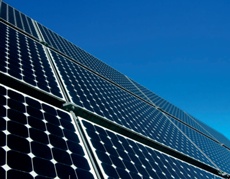Solar energy could be major source of power by 2050: IEA
29 Sep 2014
The sun could be the world's largest source of electricity by 2050, generating up to 27 per cent of the world's electricity by 2050, with photovoltaic (PV) panels contributing 16 per cent and solar thermal electricity (STE) from concentrating solar power (CSP) plants providing an additional 11 per cent, the International Energy Agency (IEA) said today.
 Combined, these solar technologies could prevent the emission of more than 6 billion tonnes of carbon dioxide per year by 2050 - that is more than all current energy-related CO2 emissions from the United States or almost all of the direct emissions from the transport sector worldwide today, IEA said in two separate reports.
Combined, these solar technologies could prevent the emission of more than 6 billion tonnes of carbon dioxide per year by 2050 - that is more than all current energy-related CO2 emissions from the United States or almost all of the direct emissions from the transport sector worldwide today, IEA said in two separate reports.
Solar photovoltaic (PV) panels constitute the fastest growing renewable energy technology in the world since 2000, although solar is still less than 1 per cent of energy capacity worldwide, the West's energy watchdog noted.
The IEA said PV expansion would be led by China, followed by the United States, while STE could also grow in the United States along with Africa, India and the Middle East.
''The rapid cost decrease of photovoltaic modules and systems in the last few years has opened new perspectives for using solar energy as a major source of electricity in the coming years and decades,'' said IEA executive director Maria van der Hoeven. ''However, both technologies are very capital intensive: almost all expenditures are made upfront. Lowering the cost of capital is thus of primary importance for achieving the vision in these roadmaps.''
He, however, stressed that the two reports do not represent a forecast and that like other IEA technology roadmaps, they detail the expected technology improvement targets and the policy actions required to achieve that vision by 2050.
With 137 GW of capacity installed worldwide at the end of 2013 and adding up to 100 MW each day, PV deployment so far has been much faster than that of solar thermal electricity, mainly thanks to massive cost reductions, IEA noted.
Under the scenario described in the roadmaps, most of the growth of solar electricity comes from PV until 2030. However, the picture changes afterwards. When reaching shares between 5 per cent and 15 per cent of annual electricity generation, PV starts to lose value in wholesale markets.
Massive-scale solar thermal electricity deployment takes off at this stage thanks to concentrating solar power plants' built-in thermal storage, which allows for generation of electricity when demand peaks in late afternoon and in the evening, thus complementing PV generation.
PV expands globally, with China being by far the leading country, followed by the United States. Over half of total capacity is situated at the final consumers' place - whether households, shopping malls or industries.
Solar thermal electricity expands in very sunny areas with clear skies, becoming a major opportunity for Africa, India, the Middle East and the United States.
Solar energy is widely available throughout the world and can contribute to reduced dependence on energy imports. As it entails no fuel price risk or constraints, it also improves security of supply. Solar power enhances energy diversity and hedges against price volatility of fossil fuels, thus stabilising costs of electricity generation in the long term.
Solar PV entails no greenhouse gas (GHG) emissions during operation and does not emit other pollutants (such as oxides of sulphur and nitrogen); additionally, it consumes no or little water.
As local air pollution and extensive use of fresh water for cooling of thermal power plants are becoming serious concerns in hot or dry regions, these benefits of solar PV become increasingly important, the IEA said in a separate release.













.jpg)






.jpg)









